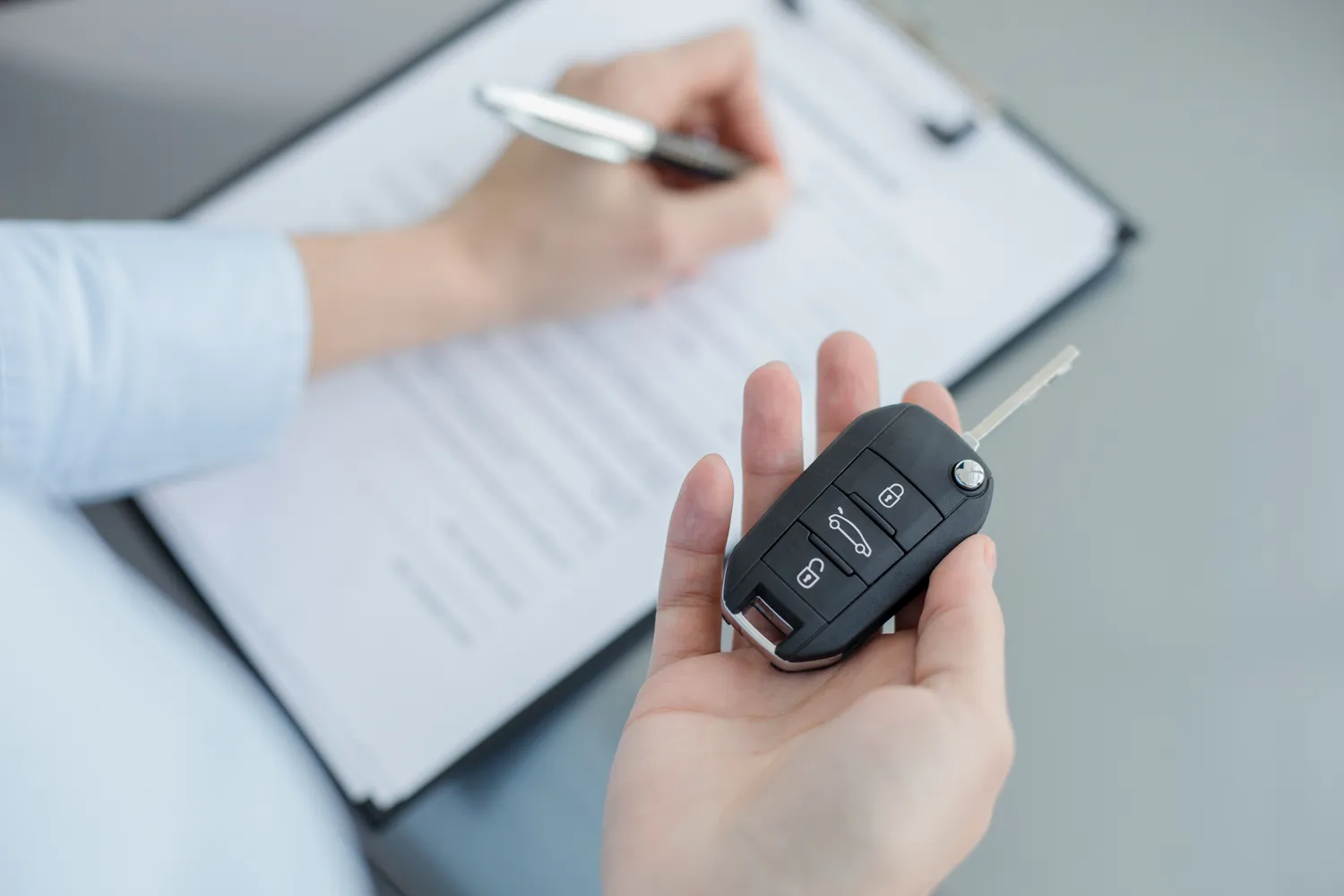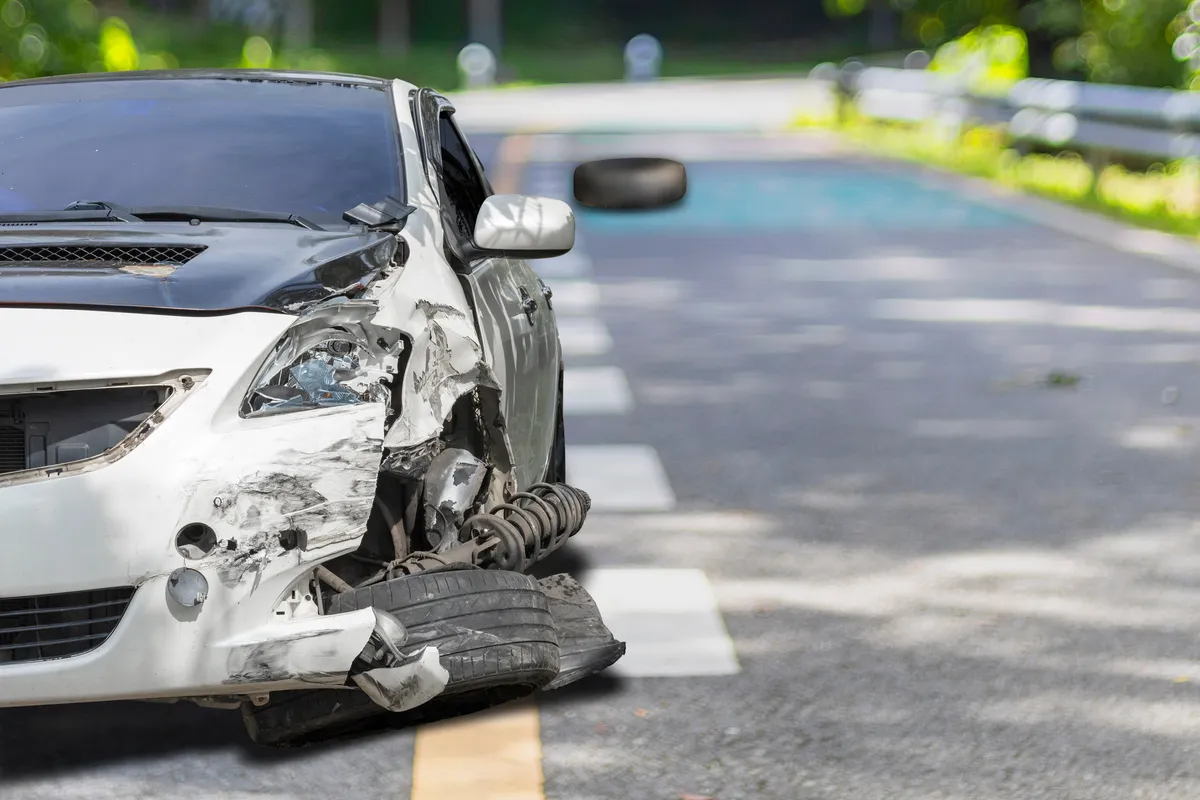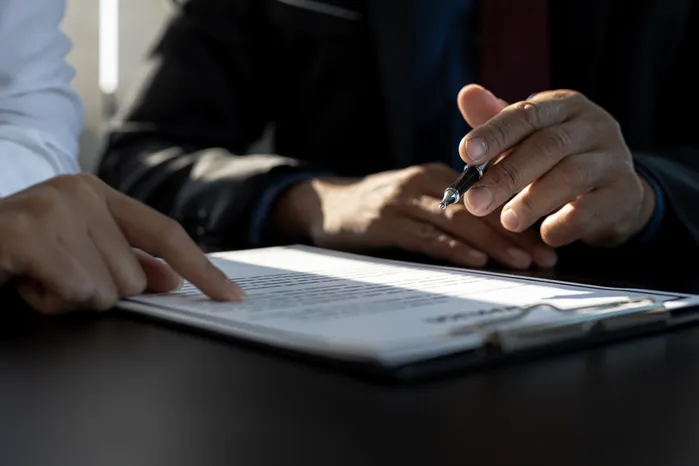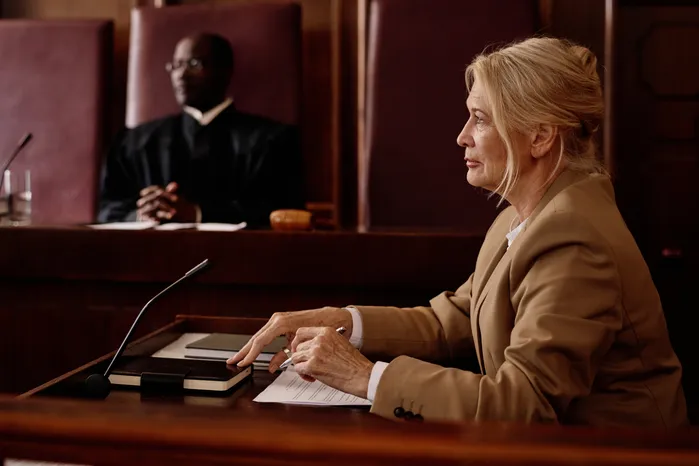10 min read time
Table of Contents
Consequences of Totaling a Leased Vehicle
Totaling a leased vehicle can lead to several financial consequences. Here's what you need to know:
Insurance Company Involvement
If your leased vehicle is declared a total loss, your insurance company will typically pay the actual cash value (ACV) of the vehicle at the time of the car accident. This amount is determined based on the car's age, condition, mileage, and fair market value.
Need for Gap Insurance
Most leasing agreements include gap coverage, which covers the difference between the insurance payout (ACV) and the remaining balance on your lease.
If you don't have gap insurance, you may be responsible for paying this difference out of pocket unless you have other means of financial compensation.
Pay Any Remaining Lease Obligations

Even though the leased vehicle is totaled, you are still responsible for the terms of your lease agreement and may need to pay any remaining lease payments until the settlement is complete.
Potential Early Termination Fees
Depending on your lease agreement, you may need to pay early termination fees if the lease is ended prematurely due to the vehicle being totaled. Check your lease contract for specific terms and conditions.
Loss of Down Payments and Security Deposits
Any down payment or security deposit you made at the beginning of the lease might not be refunded, as the funds may be spent to cover the initial depreciation and any damages to the leased vehicle.
The Need for a New Leased Vehicle
After paying the outstanding balance on the totaled vehicle, you may need to lease a new car.
This could mean starting a new lease agreement with a new vehicle, which might involve additional costs such as a new down payment or higher monthly payments if car lease prices have increased.
The Role of Gap Insurance in Leased Car Contracts
Gap coverage is a vital part of leased car contracts; here’s why:
What is Gap Insurance?

Gap insurance, or Guaranteed Asset Protection, covers the difference between the car’s actual cash value (ACV) and the amount owed on the lease.
This gap exists because cars depreciate faster than lease payments reduce the lease balance.
Why Is Gap Insurance Important in Leased Vehicle Accidents?
Depreciation Coverage: If a leased car is totaled in a motor vehicle accident, standard insurance pays only the ACV, which may be less than the remaining lease balance. Gap insurance covers the remaining amount.
Financial Protection: Without gap insurance, lessees may owe thousands of dollars out of pocket if the car is totaled. This coverage prevents surprise bills.
Lease Requirement: Many leasing companies require gap insurance as part of the contract to protect their financial well-being.
How Does Gap Insurance Work in the Event of a Car Crash?
Gap insurance pays the difference between the insurance settlement and the remaining regular lease payments.
For example, if the car’s ACV is $20,000, but the lease is $25,000, gap insurance covers $5,000.
Steps to Take After a Leased Car Accident
Accidents in a leased car can be a stressful experience. Here’s what to do immediately after:
Ensure Safety: Check for injuries immediately after the car accident and call 911 if there are any physical injuries.
Contact the Authorities: Contact the police and ask for a copy of the police report.
Obtain Contact Information: Get the names, addresses, phone numbers, and driver’s licenses from the other driver(s) involved. In addition, obtain insurance info and vehicle info, including make, model, license plate numbers, and VIN.
Document the Scene: Gather evidence by taking pictures of visible damage, road conditions, signs, skid marks, and traffic signals. Also, document the time, date, and weather.
Inform Your Leasing Company: Call your leasing company and inform them of the accident, and follow any steps they provide over the phone.
Notify Your Insurance Company: Report the accident to your insurance company and submit all relevant info you gathered. However, avoid admitting fault or talking about injuries.
Speak with a Car Accident Attorney: Consult with a car accident lawyer to better understand your situation, rights, and insurance claim.
Determine If the Car Is Repable or a Total Loss: If the car is repairable, your insurance will coordinate the repairs; however, if the vehicle is totaled, your insurance policy, your gap insurance, will cover the difference between the insurance payout and the remaining lease balance.
Keep Records: Keep copies of all documents, commutation records, contacts, and receipts related to the accident.
Evaluating Damage and Assigning Fault in Leased Car Accidents
In a leased car accident, knowing the property damage costs and who's at fault is essential to not getting caught out financially and legally.
Here’s a guide to help you determine property damage and liability.
Finding Repair Costs
Assess Vehicle Damage on Scene: Once the accident scene is safe, do a quick visual check of all vehicles involved. Note any visible damage, such as dents, scratches, and broken bits.
Take Photographic Evidence: Take clear photos of the damaged areas from multiple angles, including the overall scene and any contributing factors that may have led to the car accident.
Get a Professional Inspection: Get the leased car inspected by a professional at a body shop. They’ll provide a detailed report on the damage, repairs, and costs.
Insurance Adjuster Evaluation: Your insurance company will send an adjuster to assess the damage and provide their estimate. This will help determine the financial compensation needed for repairs or replacement.
Determining Whose At Fault
Police Report: The police report is crucial in determining fault as it contains the officers’ unbiased assessment of the accident, statements from the involved parties and witnesses, and any citations issued.
Eyewitness Statements: Get statements from any eyewitnesses. Their accounts will give a unique view of what happened and who could be at fault.
Traffic Laws and Regulations: Consider the relevant traffic laws and regulations. Running a red light, speeding, or failing to yield can determine the at-fault driver.
Insurance Company Investigation: Both insurance companies will do their investigation. They’ll review the police report, eyewitness statements, damage assessments, and other relevant evidence needed to assign fault.
Comparative Negligence: Sometimes, fault can be shared among all parties involved. Comparative negligence laws vary by state but allow a percentage of fault to be applied to each party.
Deciding if a Leased Car is Totaled After an Accident
Is a Leased Car Totaled After an Accident? Here’s What You Need to Know
What Does "Totaled" Mean
A car is considered totaled when the repair costs exceed a certain percentage of the vehicle's actual cash value (ACV), usually 70% to 80%.
Insurance Adjuster Assessment
Your insurance company will send an adjuster to assess the damage and calculate the car’s ACV.
They will compare the repair cost to the ACV threshold in your policy. The car will be considered totaled if the repair cost exceeds this threshold.
Determine If the Repair Expernxes Exceed the Actual Cash Value
ACV is based on the car’s pre-accident condition, mileage, age, and market value.
If the repair cost exceeds this value, the insurance company will declare the car totaled and pay you based on the car’s market value before the accident.
Financial Consequences and Duties After a Leased Car Accident
After a leased car accident, the financial damages and responsibilities can be significant.
Possible Financial Losses
First, you must pay your deductible before any insurance claims are processed. If the car is repairable, your insurance will cover the repair costs, but you may be responsible for any costs over your policy limits.
If the car is totaled, your insurance company will pay the actual cash value (ACV) of the vehicle minus your deductible. But this payout may not cover the balance of your lease.
Gap insurance is vital in this situation. It covers the difference between the insurance payout and the balance of your lease, so you’re not left with a financial burden for a car you can no longer use.
Without gap insurance, you’ll have to pay the lease balance out of pocket, which can be expensive, especially considering the car’s depreciation and lease terms.
You may also have to pay early lease termination fees.
Required Actions After a Leased Vehicle Accident
After the accident, you must report it to your insurance company and provide all the necessary information, including the police report and photos of the damage.
You also need to notify your leasing company. They may have specific procedures you need to follow, such as using approved repair shops or adhering to particular repair standards. Failure to notify the leasing company can result in penalties or additional charges.
If the car is not totaled, you must coordinate with your insurance company and the body shop to ensure all repairs are done satisfactorily.
Keep all receipts and records of communication-related to the repairs, as you may need to provide these to the leasing company.
If the car is totaled, you must work with your insurance and leasing company to settle the lease balance. Ensure gap insurance covers the shortfall between the insurance payout and the lease balance.
Totaling a Leased Car with Full Insurance Coverage
Totaling a leased car, even with full insurance coverage, still involves financial considerations that you must understand to navigate the situation successfully.
What Full Insurance Coverage Provides
Complete insurance coverage includes liability, comprehensive, and collision coverage. Liability coverage covers other people's medical expenses and damages, and collision and comprehensive coverage covers your car from accidents, theft, or other incidents.
Financial Affects of Being in a Leased Vehicle Accident With Insurance
The insurance company will pay the ACV minus any deductibles if the car is declared a total loss. This money goes to the leasing company that owns the vehicle.
However, the ACV may not cover the remaining balance on your lease.
That’s where gap insurance comes in. Gap insurance covers the difference between the insurance payout and the remaining lease balance, so you don’t have to pay out of pocket for a car you can no longer use.
Totaling a Leased Car Without Insurance
Totaling a leased car without insurance can cause financial and legal headaches. Knowing the implications and what to do is critical to managing such a situation.
Immediate Effects
When you total a leased car without having minimum coverage, you are liable for all costs associated with the accident.
This includes damages to other vehicles, lost wages, medical bills, and the cost of the totaled car itself. Without insurance to cover these costs, you must pay out of pocket, which can quickly put you in debt.
Financial Affects of Being in a Leased Vehicle Accident Without Insurance
The biggest financial hit is paying off the remaining balance of the lease. You are liable for the entire lease amount since you don’t have insurance to cover the car’s actual cash value (ACV) or any repair costs.
This could be thousands of dollars, especially considering the car’s depreciation. Plus, you may have early termination fees from the leasing company, which will add to your financial burden.
Potential Legal Consequences
In addition to financial responsibilities, you may have legal consequences.
If you are at fault for the accident, you could be liable for damages and injuries to others involved. This liability could lead to lawsuits and more financial penalties.
You should speak with a car accident lawyer to better understand your situation.
Refund Possibilities When Your Leased Car is Totaled
Generally, lease payments are not refunded when a car is totaled. The insurance payout and any gap insurance coverage are used to settle the remaining lease balance.
The insurance payout covers the car's actual cash value (ACV) and is typically sent directly to the leasing company. This amount is applied to your remaining lease balance.
Gap insurance covers the difference if the ACV payout exceeds the remaining lease balance. Gap insurance ensures you do not owe additional money but does not provide a refund.
Refunds are rare. If the combined insurance and gap insurance payouts exceed the remaining lease balance, you might receive a refund for the excess amount. This usually requires contacting your leasing company for confirmation.
Obtain the Compensation You're Entitled To
Contact Us Today
Rodney Okano Car Accident Lawyer is a Las Vegas personal injury law firm with over 20 years of experience helping clients obtain maximum compensation following injuries from accidents such as car crashes, worksite injuries, and slips and falls. Over those years, The Rodney Okano Car Accident Lawyer Law Firm has become an experienced law firm that can ensure exceptional results for any of its clients.



